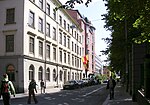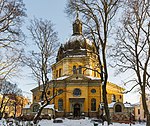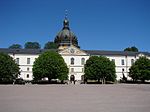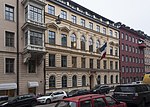Östermalmstorg
Squares in StockholmStockholm County geography stubs
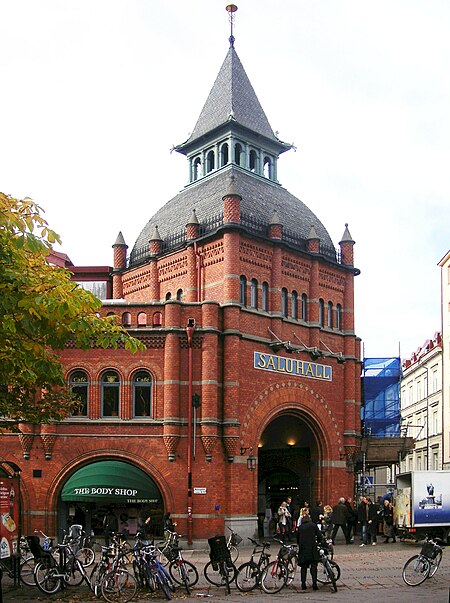
Östermalmstorg is a square in the district of Östermalm, in Stockholm, Sweden. It is known principal for Östermalm Market Hall (Östermalmshallen) which first opened in 1889. Östermalmshallen's interior is a marketplace for food and related delicacies. Östermalmstorg was also the location of the first Åhléns department store which opened in 1932.Next to the square stands the statue of The Meeting (Swedish: "Möte"), showing a naked male figure bearing a piece of meat on his shoulders before a recumbent female figure, created by the artist Willy Gordon (1918–2003).
Excerpt from the Wikipedia article Östermalmstorg (License: CC BY-SA 3.0, Authors, Images).Östermalmstorg
Östermalmstorg, Stockholm Östermalm (Östermalms stadsdelsområde)
Geographical coordinates (GPS) Address Nearby Places Show on map
Geographical coordinates (GPS)
| Latitude | Longitude |
|---|---|
| N 59.335833333333 ° | E 18.079166666667 ° |
Address
Östermalmsgrillen
Östermalmstorg
114 39 Stockholm, Östermalm (Östermalms stadsdelsområde)
Sweden
Open on Google Maps

